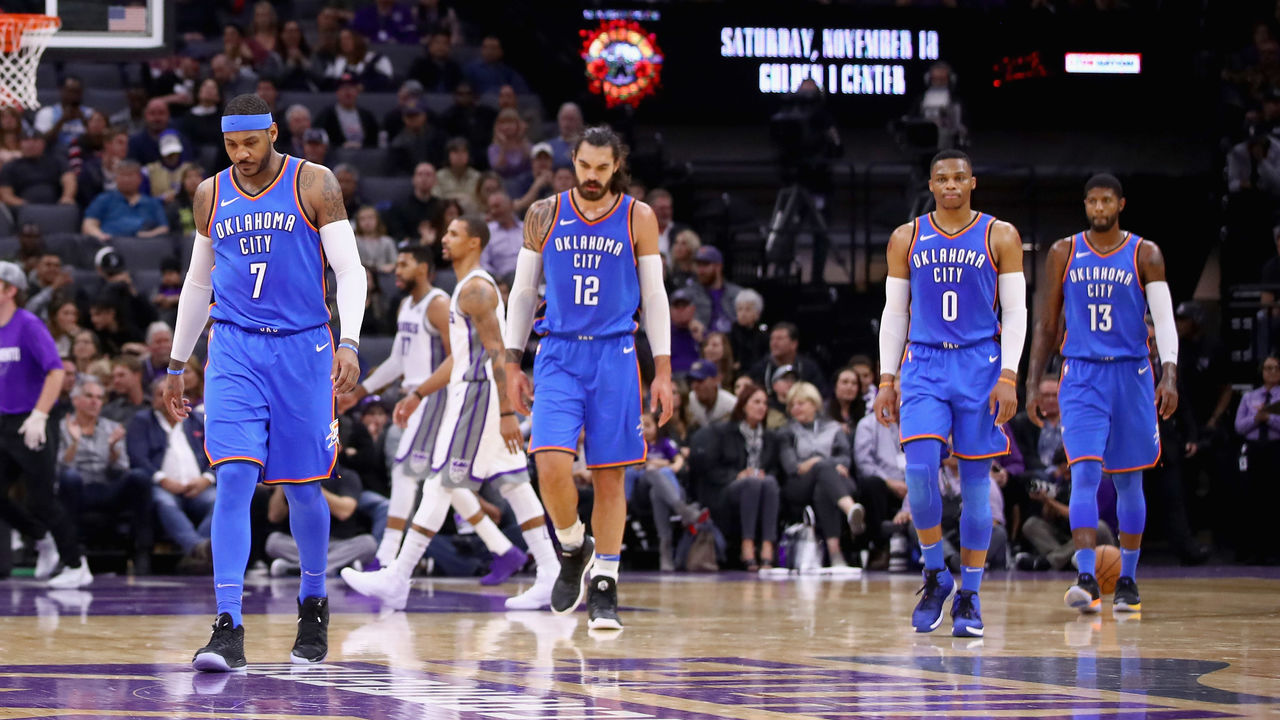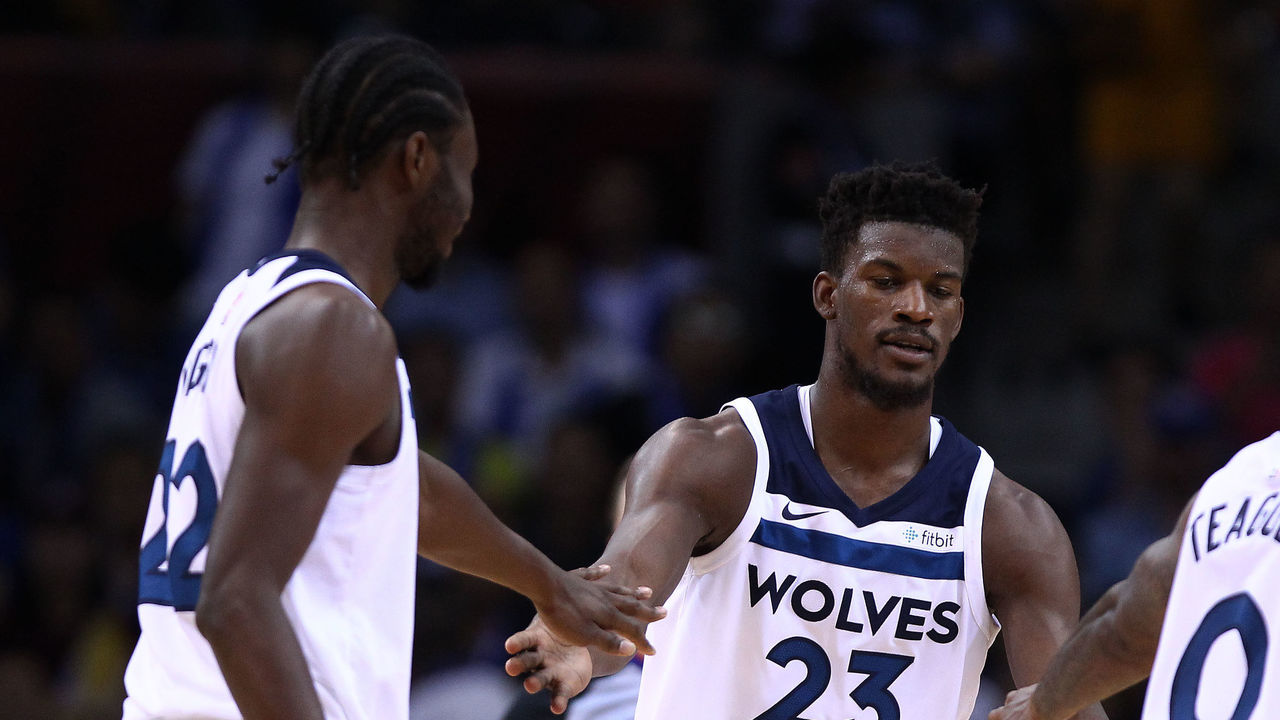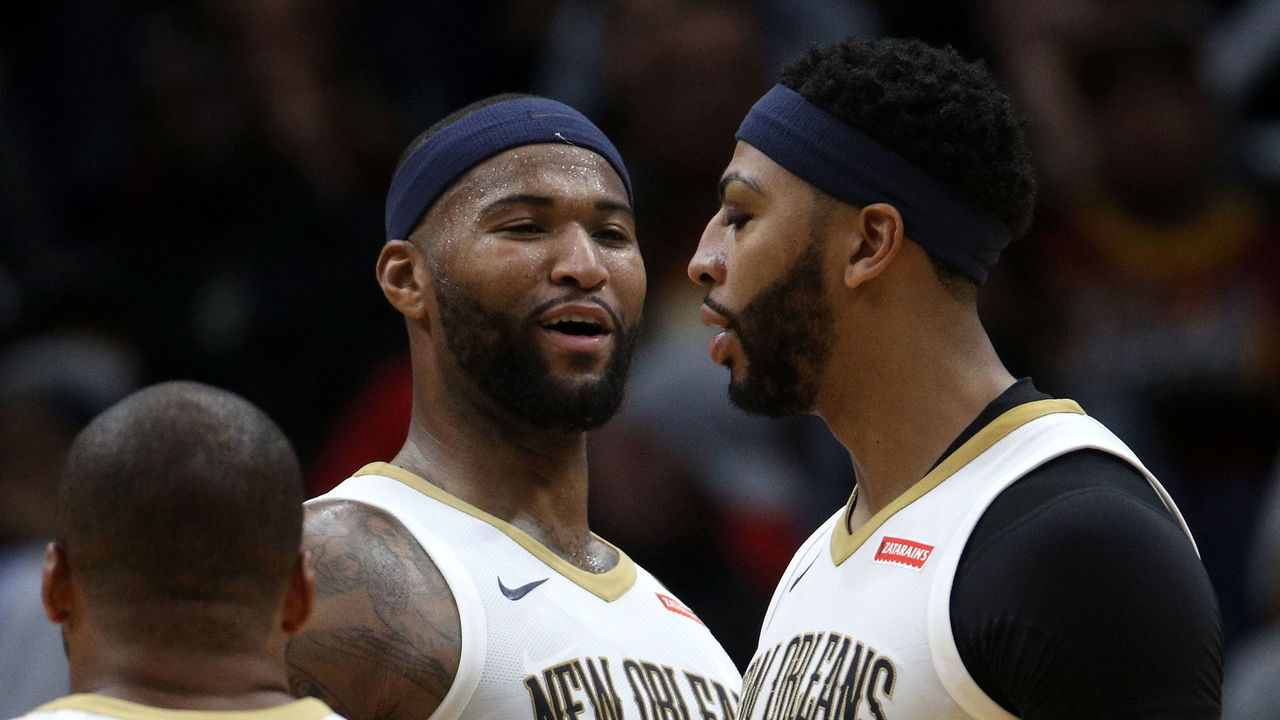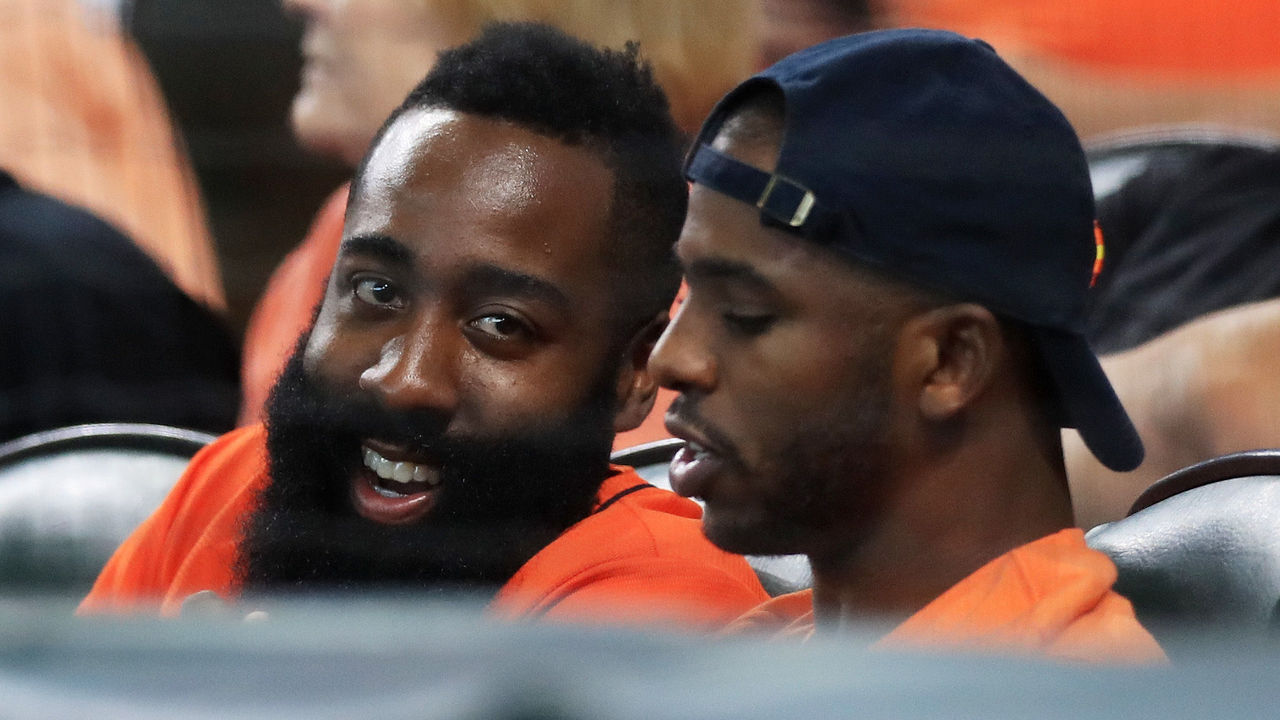LEAGUES News
Grading the NBA's newest supergroups
The NBA is a league defined by star clustering.
Not that an absence of parity is a new phenomenon - the league was a virtual duopoly for nearly the entire 1980s - but, due in part to an overall talent boom, and also to Warriors-induced urgency, the past few years have seen superstars team up with superstars at an unprecedented rate.
Smashing those types of (typically ball-dominant) players together may look good on paper, but in practice, the results are a bit of a mixed bag. Some partnerships work like gangbusters right away, like the Celtics' Garnett-Pierce-Allen triumvirate, or the Warriors with Kevin Durant. Some take time to start clicking, like the Heat did after LeBron James, Dwyane Wade, and Chris Bosh joined forces. And some simply never work out, like the Lakers' unholy union of Kobe Bryant, Pau Gasol, Steve Nash, and Dwight Howard.
This year, a handful of new star groups have emerged in the NBA galaxy. Here's a look at how they've performed so far.
Team: Oklahoma City Thunder
Star trio: Russell Westbrook, Paul George, Carmelo Anthony
Team record: 8-12
Net rating when they play together: +4.7

On the surface, this much-hyped group has been a catastrophe so far, as a team expected to compete for a top-two seed finds itself out of the playoff picture entirely with a quarter of the season in the books.
Some perplexingly poor (and unlucky) crunch-time execution has made things seem worse than they really are. The Thunder still perform at a borderline elite rate when Westbrook, George, and Anthony share the floor - but it's clear something isn't working here. The team's stars still haven't adjusted to one another, and head coach Billy Donovan is very much still trying to make the puzzle pieces fit.
This trio provides one of the most persuasive illustrations to date of the oft-invoked "only one ball" truism. Anthony looks increasingly like an old dog who can't be taught new tricks, nor even perform his old ones particularly well. He ranks third in the NBA in possessions finished via isolation, but sits in just the 37th percentile in points per isolation possession. The Thunder deploying George as a glorified spot-up shooter seems like a tremendous waste, but until Westbrook grasps the utility of off-ball movement, there isn't much to be gained by taking the ball out of the reigning MVP's hands. Westbrook has finished all of four possessions as a cutter and 10 possessions when using an off-ball screen this season, and he ranks in the 48th percentile as a spot-up scorer. In the Thunder star system, everything revolves around Russ.
It's also worth noting that no Thunder player has a more profound on/off split than Westbrook, who makes the team 11 points per 100 possessions better when he steps on the floor. The Thunder are as reliant on him as they've ever been. But he has failed to elevate his new star teammates, just as they've failed to elevate him. The season is still young, but with George just seven months from unrestricted free agency, the Thunder may only have until the trade deadline to figure this thing out.
Grade: D
Team: Minnesota Timberwolves
Star trio: Jimmy Butler, Karl-Anthony Towns, Andrew Wiggins
Team record: 13-9
Net rating when they play together: +5.9

The Timberwolves have been very Jekyll and Hyde, but they're rounding into something resembling the team many envisioned when they landed Butler in the offseason. Their defense remains leaky, but the team's defensive rating when Butler, Towns, and Wiggins share the floor (104.7) would actually rank a respectable 16th in the NBA, and as those three have grown more comfortable with each other's rhythms, they've looked pretty scary together on the offensive end.
They still rely a little too heavily on one-on-one play, and, like the Thunder, don't generate nearly enough off-ball movement when one of their three offensive stars goes to work. The logic is sound - all three are blessed with above-average size, strength, and quickness for their positions, and they can basically create mismatches at will - but outside of Towns post-ups, none of them scores at an above-average rate in isolation.
When any of them gets even a little bit of runway, though, they're devastating. Lacking elite 3-point shooting, the Wolves' trio instead sets out to physically overwhelm opposing defenses. They bulldoze to the basket, crash the offensive glass, and pile up free throws. They don't play with a ton of pace, but they don't waste opportunities when they do get out on the break, with the three combining to score 1.29 points per possession in transition. They rarely turn the ball over, and while they don't zip it around as much as you'd like, they've established a nice balance, with all three posting usage rates between 22.1 and 23.5 percent.
In perhaps the most important development, Butler has come on strong after a strangely passive start to his Wolves career, and grows more assertive with each passing game. He's assumed more ball-handling and playmaking responsibilities, is developing a wicked pick-and-roll chemistry with Towns, and his presence has made the game exponentially easier for Wiggins at both ends. (Take Towns out of the equation, and lineups featuring Butler and Wiggins have outscored opponents by 12.5 points per 100.)
Eventually they'll need to defend better, but it's a good sign the Wolves have already found ways to make their ostensibly mismatched parts fit together on the offensive end.
Grade: B
Team: New Orleans Pelicans
Star duo: Anthony Davis, DeMarcus Cousins
Team record: 11-10
Net rating when they play together: +4.3

Unlike the other groups on this list, Davis and Cousins had a partial season before this one to get acquainted. It shows.
This isn't a partnership in name only; the two multi-skilled bigs complement and play off of each other. They do so in the way a pair of guards or wings might, with their two-man game replete with four-five pick-and-rolls, drag screens in semi-transition, backdoor lobs, and entry feeds-turned-kickouts for 3-pointers. The Pelicans rank second in the NBA in assist rate, and that figure jumps even higher when Davis and Cousins share the floor.
With their quick feet and collective size, Davis' length and Cousins' strength, they can burn teams who go small and run circles around teams who stay big. They can use that length and foot speed to suffocate you on defense when they're locked in. Which is a big "when," but still.
That's not to say there haven't been issues. Cousins can push the point-center thing too far and try to do too much. He's been a turnover machine, and his 3-point accuracy has tailed off as he's jacked up more and more attempts. His effort in transition waxes and wanes from one possession to the next. His tetchy streak has gotten the better of him a few too many times, and it may be rubbing off on Davis. The two haven't leveraged their size advantage into as many offensive rebounds as you'd expect. And the weakness of their supporting cast curbs the number of minutes they can even be on the floor together.
But, for the most part, these two have proven that a twin-big star system can still thrive in the downsized NBA. If they can sustain what they've done so far (which would include continued good health), they should be a playoff team, and Cousins should be back in New Orleans next season.
Grade: B+
Team: Houston Rockets
Star duo: James Harden, Chris Paul
Team record: 17-4
Net rating when they play together: +6.0

This sample size is still small because Paul missed a month with a knee injury, but in the seven contests he's suited up for, he and Harden have emphatically squashed the notion that the overlap in their games would make them a tenuous fit. The Rockets are 7-0 in those games, outscoring opponents by an average of 18.4 points.
As he contemplated his future this past summer, Paul bemoaned the extent to which he had to handle the ball during his time with the Clippers. He fished his wish in Houston. When the two play together, Harden serves as the primary playmaker, while Paul scampers around on the wing and makes plays off the catch. He's getting 22 fewer touches per game than last season, and controlling the ball for nearly two fewer minutes on average. His usage rate is the lowest of his career by far. And the Rockets have been absolute murder when he's on the floor.
It helps that Paul appears to have bought in and embraced the Rockets' offensive ethos. It hasn't seemed to bother him that he's mostly used as a decoy off the ball, and that he can go five or six possessions in a row without being involved in the central action. He'll sometimes backpedal a few feet behind the 3-point line just to give Harden more room to operate. When he does have the ball, he's rarely looking for his own offense, instead opting to sling skip passes or attack and kick to find 3-point shooters in the corner. He has a hilarious 8-to-1 assist-to-turnover ratio.
Head coach Mike D'Antoni has kept the pair's minutes staggered, and when Paul plays without Harden he mostly reverts to his Clippers role as a probing, defense-collapsing facilitator. Perhaps that's helped assuage any frustration he might have with his otherwise reduced offensive role. And maybe he won't be so accommodating if and when the Rockets hit a rough patch. For now, though, this is far and away the best new superstar partnership in the league.
Grade: A+
(Photos courtesy: Action Images)

